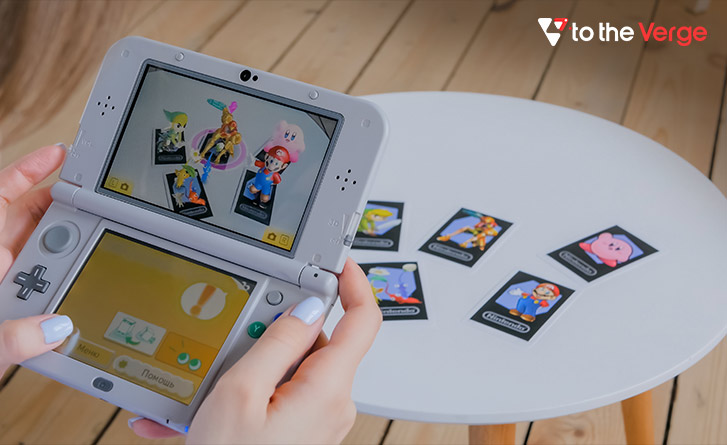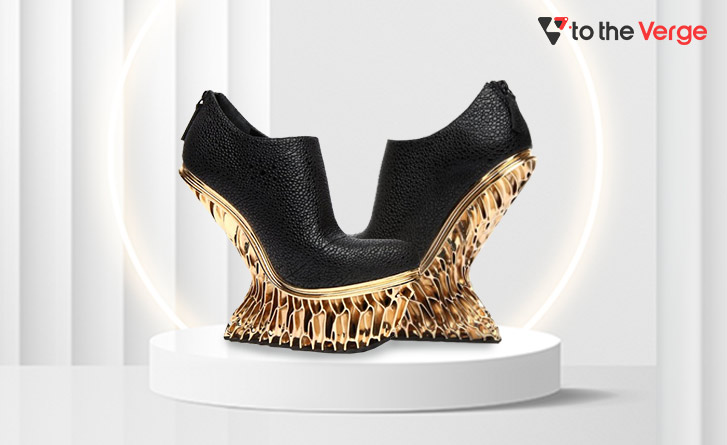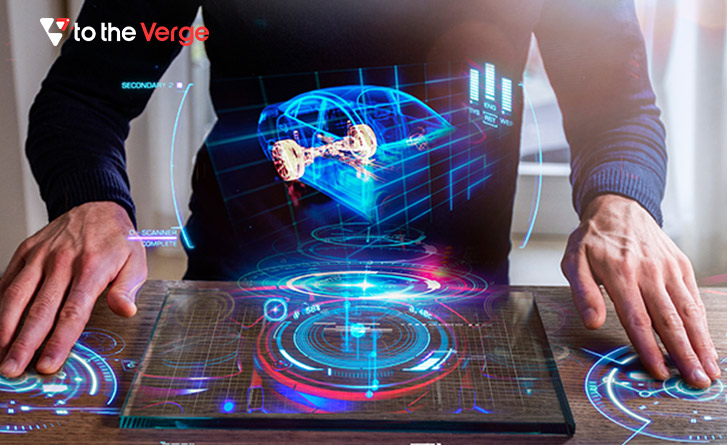Wouldn’t life be dull and boring if it was only in two dimensions? But thanks to that third dimension, adding so much fun and excitement to our lives! For example, while watching a 3D movie, did you reach out to “touch” things that looked like they were hovering right in front of you? This is what 3D Technology is, adding fun to your movie time.
However, 3D technology is no longer limited to watching 3D movies, images, or games. The 3D revolution has seriously shaken this ever-evolving digital world. It has already established itself in industries like medicine, engineering, science, military, entertainment, textile, and whatnot.
3D technology plays a more significant role in society than ever before, both in digital and physical environments. In addition, innovations in 3D applications and equipment are also unlocking new possibilities in the augmented reality and virtual reality (AR/VR) space.
3D printers and devices that create 3D objects based on a digital file are now so accessible that consumers can pick up a printer and start manufacturing small 3D items and designs at home. Isn’t it great advancement in technology?
We now have 3D television sets, 3D laptops, 3D smartphones, cameras, gaming consoles, etc., that are adding new flavors to our lives. But have you ever stopped and asked yourself – What exactly is this 3D Technology? How does 3D work? And What will be the future of 3D technology? Let’s find out.
What is 3D Technology?
3D technology stands for three-dimensional technology, providing some illusion of depth perception through which viewers enjoy different types of experiences. Dimensions can be defined as properties of space, referring to extension in a particular direction.
For example, 2D images have two dimensions – length and width. Visualize a picture drawn on a piece of paper. The paper has length and width. However, most things in the real world have three dimensions. The third dimension here is depth; like in a cube, it has length and width, but other than that, it has depth too.
When you watch any movie, the screen is usually two-dimensional. It includes length and width but no depth. That’s why regular 2D movies look as if all the action is happening on the big screen. On the other hand, 3D movies add depth and make you feel like you are a part of the experience.

But how do they do that? Thanks to binocular vision, people perceive depth and see the real world in three dimensions. That doesn’t mean you have to look through binoculars! We have two eyes that are almost three inches apart.
The separation of our eyes signifies that each eye sees the world from a slightly different perspective. Our brains take these two slightly different images and do all the essential calculations to create a sense of depth and let us gauge distance.
Experts have a fancy word for how your eyes and brain come together to see in three dimensions. It’s called stereoscopy. Stereoscopy is what modern 3D technology tries to duplicate.
3D is part of computer graphics that includes developing, analyzing, and displaying three-dimensional objects in a two-dimensional space like your desktop screen. Usually, 3D technology creates a photorealistic digital prototype of a real-life object such as a building, aircraft, or tree. Additionally, most product images found on eCommerce sites like Amazon are created using 3D technologies.

We all can agree on the fact that anything displayed in 3D appears magical, almost too real to be true. But have you ever wondered how this beautiful illusion of 3D technology works?
How does 3D Technology Work?
The principle behind the 3D Technology appears great in theory, but how it is implemented or how does 3D technology work is the next big question. The technical term used to describe the phenomena behind the 3D Technology is known as “Stereoscopy,” which we have already heard earlier. It might sound very complex, but it is a very straightforward concept.
Stereoscopy refers to the ability of the brain to combine the two images of the same object created by our eyes into a single three-dimensional image. If you are wondering why we are here talking about two images created by our eyes. Then Yes! Both our eyes view the same object in a different way.
That means that the left eye collects the left perspective of the object, and the right eye gathers the right view of the object, both of which are then sent to the brain, where they are combined and overlaid to create a 3D object that has volume and occupied space.

So the physicists aimed to create the same effect with on-screen 2D images, which can be done mainly in two ways.
1. Anaglyph technique
It is a technique containing the red and green glasses that we all have seen at some point in our lives. The technology behind this is that if the same object is seen in different colors by each eye, they would observe them separately. When the brain overlaps them, it will create an illusion of depth, creating the 3D Reality.
2. Polarized light concept
Polarized light is the light wave that transmits in one direction, either horizontal or vertical. A ray of light can be polarized using polarizing filters that are fundamentally a film involving horizontal or vertical slits similar to the Venetian blinds.
In this process, the same film reel is played in two different cameras simultaneously with other Polaroid filters. For example, the one on the right would have vertical filters as our right eye perceives vertically polarized light. The one on the left has a horizontal filter for our left eye to perceive the horizontally polarized light.
So like in the Anaglyph technique, the two different views of the same image are overlapped by our brain, giving rise to the illusion of the third dimension. These technologies are used to manufacture 3D glasses, watch 3D movies, manufacture 3D televisions, etc.
The History of 3D Technology
So if you think 3D technology is a recent discovery? Then you are wrong! People started talking about and exploring three-dimensional Technology even in the 19th century when Sir Charles Wheatstone described the process of stereopsis: “the mind perceives an object of three-dimensions utilizing the two dissimilar pictures projected by it on the two retinae.”
In simple terms, this means that two similar overlaid images project another one, which is more realistic for your sense of insight.
But why did the first or old 3D glasses have red and blue colors? Well, because it was comfortable for each eye to recognize those two different images and then overlay them. Each eye would get its perspective, and the red and blue colors were used to separate the images so that you could have a 3D environment eventually. But, unfortunately, the quality wasn’t so great, if you remember.
So to overcome this problem and attain a high-quality 3D environment, polarized glasses were used, which could orient the light in vertical or horizontal directions. One eye image could be projected vertically and another horizontally, but it would get blurry if you move your head.
Therefore, to get a better experience, 3D work on rotational polarity was implemented. So it would be clockwise in one eye instead of horizontal and counterclockwise in another sight instead of vertical. So that’s why you can now watch your favorite movie in 3D in your comfort.
The Nintendo 3DS gaming console was the forerunner of what 3D Technology could be, i.e., No Glasses! In Japan, the glasses-free 3D gaming device was first released on February 26, 2011. Tom’s Guide discovered that Nintendo 3DS uses a parallax LCD barrier made by Sharp to view the 3D environment without glasses.

Parallax is an obvious displacement or variation in the prominent position of an object viewed along two separate lines of sight. It is measured by the angle or semi-angle of inclination between those two lines.
Although the 3D technology has been there for quite some time, the advancement is still ongoing. There are different types of 3D technology used now in multiple sectors. Let’s discuss some of them:
Types of 3D technologies
1. 3D Modeling:
3D modeling is the process of creating a three-dimensional virtual model of a product using 3D applications. Here models are made in CAD software and visually characterized as two-dimensional Images using different visualization techniques.
Products of high quality and complex structure are created with preferred geometry, shape and color using 3D modeling software like 3ds Max, Autodesk Maya etc. According to a report, the global 3D Modeling Software market is expected to reach 36100 million by the end of 2024, increasing at a CAGR of 8.3% between 2019 and 2024
2. 3D Rendering:
3D rendering converts a three-dimensional model in your computer into a two-dimensional image. It allows you to create digital, photorealistic snapshots of products using the preferred color and environment and then envisage how they look in the real world. The model is further enhanced or modified based on the visualization to get closer to the requirement of ideal product.
3. Stereoscopic 3D
Stereoscopy refers to a technique for building or improving the depth illusion in an image. It is carried out by presenting two offset images independently to the left and right eye of the Viewer. These 2D offset images are then merged in the brain to perceive 3D depth. Hence, it is called stereoscopic or 3D imaging.
4. Computer Generated Imagery (CGI):
CGI is the process of creating photorealistic images or animated visuals using computer graphics applications. This 3d technology is extensively used in numerous industries such as advertising, eCommerce, architecture, film etc. CGI is a time-efficient alternative to product photography, where the result is more realistic and cost-effective.
5. 3D Printing technology
Over the past few years, the competencies of 3D printing technology have gained much attention in academia, business, and various other industries. To tap the newly emerging market stimulated by 3D printing, the textile and fashion industry started promoting innovation by refining new techniques to incorporate digital fabrication techniques.
Brands like Nike, Iris van Herpen and Chanel have already explored incorporating 3DP Technology with new aesthetics and materials in clothing. In the jewelry industry, 3D printing technology also empowers small businesses to offer high-end customized jewelry made on-demand for a fraction of the cost it would have charged without that 3DP Technology.

3D Printing Technology is considered a disruptive force to shape the markets in the future. Hence, with the growth of such intangible art frameworks, brands have started to trust such technology that holds a huge potential to offer feasible methods that would create and change the fashion industry’s future.
6. 3D Animation:
3D animation is a technology used to create moving pictures in a digitized 3D environment. These images generate an illusion of motion. 3D animation doesn’t require real objects. Instead, it uses product modeling. A 3D designer knows how to make a photorealistic animation to attain the audience’s attention. This technology is extensively used by the film and gaming industry.
7. 3D Viewer:
The 3D Viewer provides you a perceptive utilization of space used to showcase a real-time environment. Consequently, one can see detailed and highly impactful visual effects on their screen. By integrating 360 degrees views in eCommerce stores, customers can get a hold of every detail, explore the product better, and get a detailed picture quality and design.
8. 3D Projection
3D projection is a procedure of mapping 3D points to a 2D plane. There are different types of techniques used for showing graphical data. These methods are based on planar two-dimensional media. This projection type is popular, mainly in computer graphics, engineering, and drafting. There are two types of projection:
- Orthographic projection
- Perspective projection
This sector has grown rapidly, and the market size was valued at USD 8.97 billion in 2018. Reports show that the industry of 3D projection, which consists of 3D printing, modeling and mapping, is expected to grow at a CAGR of 20.94% from 2019 to 2024
9. Augmented Reality (AR):
Augmented Reality needs no introduction for most people. AR merges the real-world environment with a virtual world and transforms how people shop and engage with products online. AR permits consumers to try customized products in their home environment and see how it looks in real-life usage.
Earlier, people required measurements to buy furniture and had to predict if the furniture looked good in their rooms. With Augmented Reality in place, customers do not need all these exercises, as they can try the selected furniture and choose the best one that suits their environment.

Apart from this, AR offers marketing prospects, and lets businesses promote their brand more appealingly by providing product info to the customers using 3D experiences.
10. Morphing
Morphing is special effects in motion images and animations that morph one image into another. It depicts one person turning into another through technological means or through a smooth transition. It is one of the frequently used 3D technologies. Under this technique, the source image is progressively distorted and is faded out while the target image is faded in.
The early pictures in the order are much like the first image. The middle image of the sequence is the average of the first image distorted halfway towards the second one and the second image distorted halfway back in the direction of the first one. The procedure involves warping two images with identical “shapes” and then cross dissolving the resulting photos.
3D technology Applications
3D Technology is growing by leaps and bounds in this evolving digital world. Now, it is not limited to 3D movies, images, or games anymore. In the last decade, 3D Technology has triggered a revolution in almost every industry. So let’s discuss some of the 3D Technology applications here:
1. Education
3D learning is a new approach to understanding distance learning and an opportunity to introduce blended learning and enable all members of educational groups, particularly digital natives, to explore virtual worlds. It is very thrilling to study using 3D Technology. The students’ grasping power and interest boost it since it provides a whole new and innovative way to learn.
Read More:- MetaClassrooms: The Changing World of Education
Everything becomes faster and easier to learn, and children learn new concepts and display higher concentration levels. Numerous active learning classroom initiatives are underway, such as a multi-institution open educational resources (OER) degree initiative. When massive online courses (MOOCs) were new, many institutions introduced MOOC initiatives.
Even mobile devices were first familiarized in many higher education institutions as initiatives. However, these technologies and practices have moved beyond the initial stage and have become relatively standard in higher education.
2. Gaming
Nowadays, 3D Technology has been integrated into nearly every aspect of the technology world. So no wonder there are also 3D games that make the gaming experience more thrilling and real. In addition to many different online and offline games nowadays, many 3D game consoles let gamers experience these 3D games even more and even better.
Read More:- Metaverse – The Future of Gaming
Therefore, the only thing you will need to play these newer 3D games is a computer capable of running this game because these games often require quite high specifications to run smoothly and without any lags. If you want to experience a 3D game for yourself, there are many games available online and for free and many downloadable games that will be even better and with improved graphics and stories.

3. Fashion
The worth of 3D Technology is not restricted to a few sectors. It has grown from textile designers to garment manufacturers and pattern creators. They can now craft garments digitally and show the vendors a full 3D garment with specifications.
This can be achieved quickly compared to the product’s actual production and development time. Designing, production management, marketing, and sales can be made without manufacturing the product. There is no doubt that the virtual fashion world has come to its Reality.
4. Architectural Design
Each architectural design started with a model design. This essential resource permits architects, stakeholders, and the general public to visualize the design. Yet it’s a lengthy, complex procedure from the schematics to actual versions. As a result, creating a design, precise and measured design model needs a lot of discipline.
If complex shapes are concerned, the task becomes much more complicated. 3D printing will make the process easier. This can produce extremely accurate physical structures from various methods and colors centered on a CAD model. This easy method helps the architects quickly and accurately bring out the models.
This also provides investors and consumers a clear understanding of the looks of the final design. And when they want some enhancements, they can easily propose any to see them in a renewed 3D-printed design. This keeps costs down instead of preparing until near completion of the building before finding it requires some adjustments. 3D printing can switch out designs in weeks, no matter the complexity.
5. Automotive Industry
The 3D application can be used as an efficient intervention for enhancing the manufacturing procedure of vehicles in the automobile industry. Moreover, 3D printing was coined as a technique that included building solid forms by printing consecutive layers of ultraviolet curable materials.
However, today, 3D printing has been adopted in the automotive industry as a time and cost-saving way of developing cars. Through 3D Technology, several parts of vehicles, such as mirror holders, lamps, and dashboard components, can be effortlessly created.
Furthermore, 3D printing technology has helped automobile manufacturers optimize their supply chain and facilitate automobile companies in securing mass manufacturing of vehicles for the available global market.
Moreover, through 3D printing technology, it has been possible for automobile manufacturers to execute large-scale production of spare parts for vehicles. Also, reputable car manufacturers like Rolls Royce, BMW, and Bentley have adopted 3D printing technology to create strong and durable automotive parts.

The growth in the implementation of 3D Technology in the automobile industry has been massive. Also, for that reason, all the other car manufacturers are adopting 3D technology to enhance the scale of their manufacturing operations.
The Future of 3D Technology
As per the recent report, soon, we will be able to enjoy even live transmission from important sports events without the hassle of 3D glasses. Engineers have built a four-camera system that could provide an unbelievable experience, which isn’t as far as you think. And it appears that the 3D glasses-free turmoil is about to start as HTC upgraded their EVO 3D to a glasses-free model.

Toshiba also launched its 3D glasses-free TV with a price tag of 8,000 euros. Toshiba has broken the ice, and we should expect much more models soon in the market for lower prices. On the other hand, a more skeptical voice suggests that glasses-free 3D TVs will not be ready for commercial use until a few more years.
Looking at all these advancements, you could say, why wasn’t 3D Technology implemented much earlier, and why are we still using these 3D glasses? The answer is simple: invention doesn’t necessarily mean mainstream production or adoption. That’s why the 1985-2003 period is represented as the “reincarnation of 3D” and, from 2003 up till now, the “mainstream renaissance.”
Recent research revealed that the global 3D mapping and modeling market size is estimated to increase to USD 6.5 billion by 2023, at a CAGR of 18.0% from 2018–to 2023. Growing the requirement for VFX technology in movies, 3D applications in games, and 3D imaging in mapping are major growth factors for the 3D mapping and modeling market.
Even major companies are investing heavily in extended Reality (XR) technology, which is an emerging term for all immersive technologies, including AI, AR, VR, and Mixed Reality (MR). Moreover, considered the next iteration of the internet, the Metaverse is where the physical and digital worlds will gather together using VR headsets, smartphone apps, AR glasses, or other 3D applications.
FAQs – 3D Technology
Q1. What Is Meant By 3D Printing Technology?
Three-dimensional (3D) printing is an additive manufacturing procedure that forms a physical object from a digital design. The process works by laying down thin layers of material in the form of liquid or powdered plastic, metal or cement and then merging the layers together.
Q2. How Is 3D Printing Done?
The 3D printing procedure converts a whole object into loads of tiny little slices, then makes it from the bottom-up, slice by slice. Ultimately, those slim layers stick together to create a solid object. Each layer can be very complex, meaning 3D printers can make moving parts like hinges and wheels as part of the same object.
Q3. How Does 3D Technology Work?
3D Technology work by giving the illusion of depth by presenting offset images separately to each eye. The human brain then merges these images to form a 3D image.
Conclusion
3D Technology has not only enriched our lives but also added more excitement that was really needed. Adding a different perspective to everything we see in the virtual world has given us a chance to be a part of our favorite stories and live them with our beloved characters.
3D Technology has allowed us to acquire whatever we want in this forever-changing world. 3D technology is used for several purposes today, which is beyond astonishing, but what the future holds is still unknown. The possibilities it embraces are boundless, as only the surface has been scratched. There is still much more to be revealed.
Snehil Masih is a professional technical writer. He is passionate about new & emerging technology and he keeps abreast with the latest technology trends. When not writing, Snehil is likely to be found listening to music, painting, traveling, or simply excavating into his favourite cuisines.







![How to Update and Reinstall Keyboard Drivers on Windows 10/11 [A Guide]](https://wpcontent.totheverge.com/totheverge/wp-content/uploads/2023/06/05062841/How-to-Update-and-Re-install-Keyyboard-Drivers-on-Windows-10.jpg)
